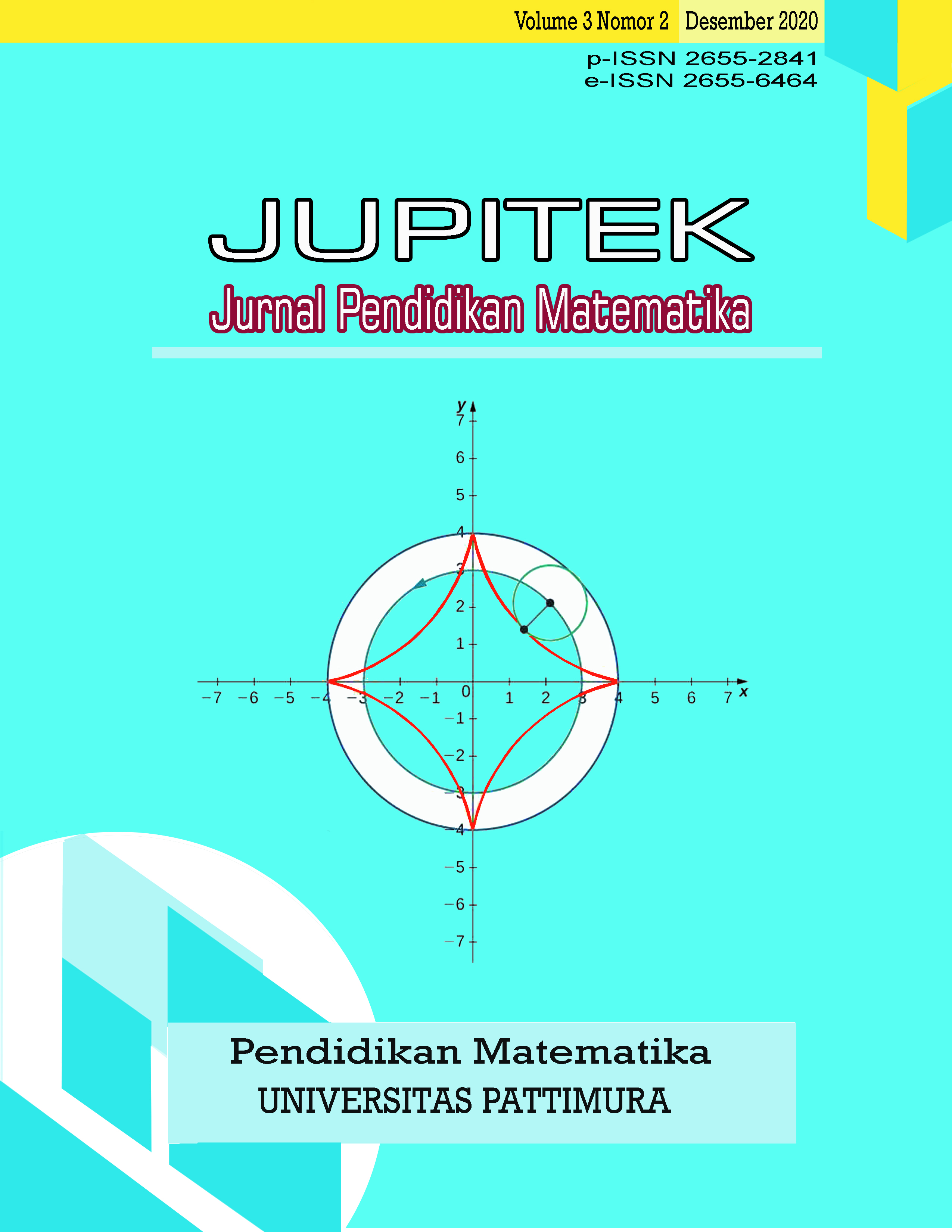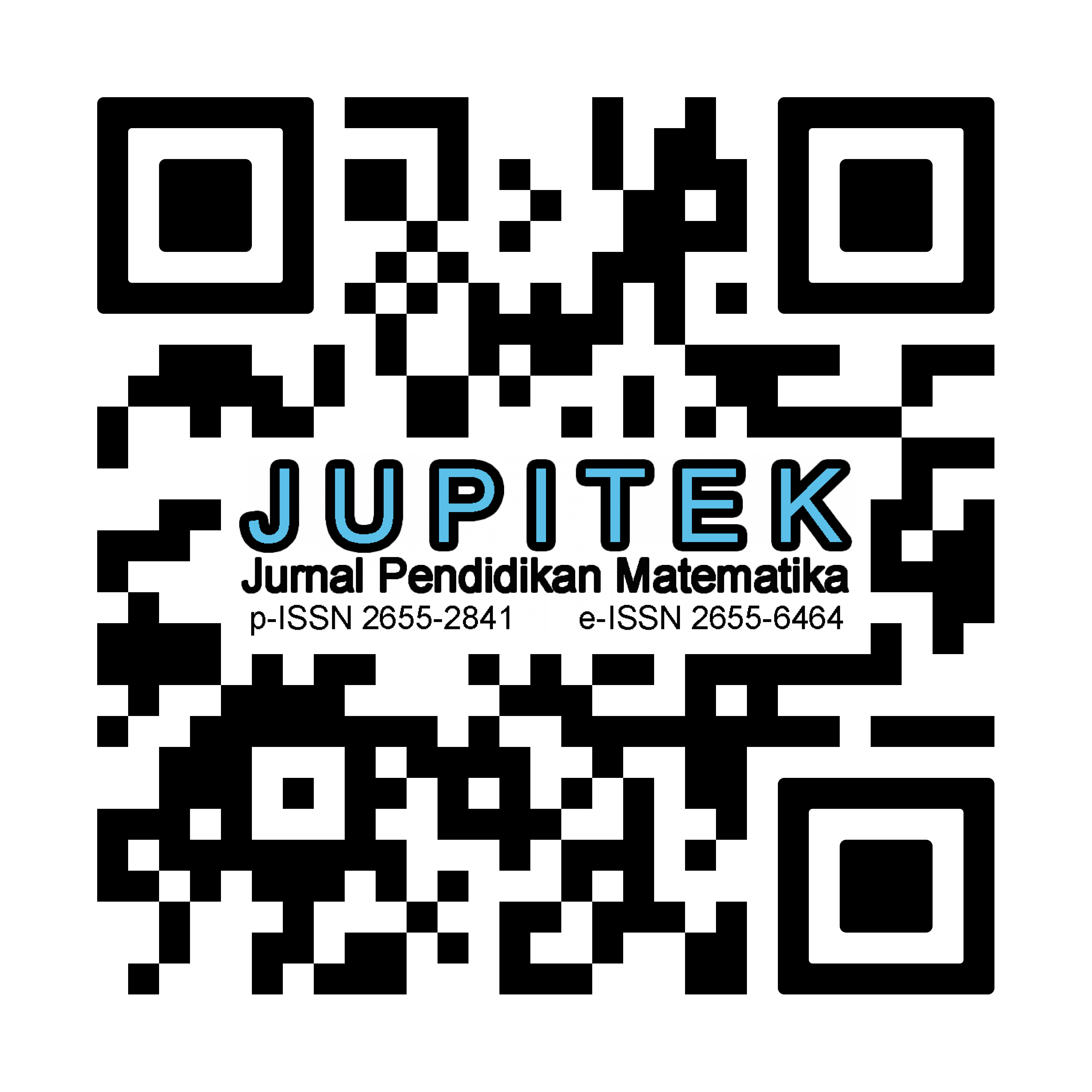THE ETHNOMATHEMATICS OF TUTUWARU COMMUNITY IN THE CRAFTS OF KOLI LEAF WEAVING
Abstract
Ethnomatemics-based mathematics concept implementation can be carried out through constructivism-based learning such as realistic mathematics, problem-based and learning with a scientific approach. This research purpose to explore the form of ethnomatemics on the woven cabbage leaves of the Tutuwaru community and analyze the process of understanding mathematics from the perspective of indigenous people and indigenous knowledge and examine the development of woven form ethnomatatics in school mathematics. The method used in this research is descriptive qualitative research. The subjects are 2 members of the weaving community, while the objects of research are Nyiru (winnowing-basket), Topi (hat), Keranjang dan Bakul (basket). The results showed that the form of weaving from a typical local Koli (cabbage) tree, could be connected with several mathematical concepts such as basic geometry and arithmetic. The hexagonal concept based on the understanding of multiples is an "indegious knowledge" that exists in the Tutuwaru community in constructing the form of nyiru-woven, reflection, points, lines and tessellation. These mathematical ideas can be used as context in school mathematics learning
Downloads
References
Francois, Karen. (2009). Tle of Etnomathematics within Mathematics Education, Procceeding of CERME6. tersedia pada www.inrp.fr/editions/cerme6, download pada tanggal 20 Maret 2017.
Grenier Louise. (1998). Working with Indigenous Knowledge: A guide for Researchers. Ottawa: IDRC.
Hadi,A.C.Sungkana. (2006). Melestarikan Kearifan Lokal masyaralkat Tradisional, Buletin Perpustakaan dan Informasi Bogor, tersedia pada http://bpib-art.blogspot.com/2006/06/melestarikan-kearifan-masyarakat.html, diunduh, 9 Februari 2019,
Hadi, S. (2017). Pendidikan Matematika Realistik. Radjawali Pers, Jakarta.
Hartoyo, A. (2012). Eksplorasi Etnomatematika pada Budaya Masyarakat Dayak Perbatasan Indonesia Malaysia Kabupaten Sanggau Barat. http://jurnal.upi.edu/file/3-agung.pdf, diakses 20 Maret 2017.
Harris, A. (2000). The Mathematics of Tesselation. Available at https://studylib.net. didownload 9 Februari 2019
Isabela, M. C. (2019). Etnomatematika sebagai salah satu bentuk penguatan kearifan local dalam pembelajaran matematika, MATH DIDACTIC: JURNAL PENDIDIKAN MATEMATIKA Volume 4 Edisi Dies Natalis XXXII, halaman 243 – 252 Tersedia Daring pada http://jurnal.stkipbjm.ac.id/index.php/math
Laurens, Th. (2016) Analisis Etnomatematika dan Penerapannya Dalam Meningkatkan Kualitas Pembelajaran, Journal LEMMA, e-ISSN 2460-1047, Volume 3 No.1, STIKIP PGRI Sumatera Barat, Padang.
Marsigit. (2016). Pengembangan Pembelajaran Matemati ka Berbasis Etnomatematika, Makalah dipresentasikan pada Seminar Nasional Matematika dan Pendidikan Matematika 2016, STIKIP PGRI Sumatera Barat
Matitaputy. (2016). Desain Pembelajaran Matematika dengan Pendekatan Etnomatematika pada Materi Nilai Tempat Kelas 2 SD, Journal LEMMA, e-ISSN 2460-1047, Volumen 3 No.1, STIKIP PGRI Sumatera Barat, Padang
Mampouw. (2010). Eksplorasi Konsep Dasar Matematika Melalui Konteks Lokal dan Penggunaannya dalam Pembelajaran, Prosiding Konferensi Nasional Matematika V, Universitas Negeri Manado, ISBN 978-602-96426-1-2, hal.413-422
Matang Rex. (2002). The Role of Etnomatematics in Mathematics Education in Papua New Guine: Implications for Mathematics Curriculum, Journal of Educational studies vol. 24, Juni 2002, download 20 Maret 2016.
Ngilawajan, D. A. (2015). Konsep Geometri Fraktal Dalam Kain Tenun Tanimbar. BAREKENG: Jurnal Ilmu Matematika Dan Terapan, 9(1), 33-39. Retrieved from https://ojs3.unpatti.ac.id/index.php/barekeng/article/view/277
Rosa, M & Orey, D. (2011). Ethnomathematics: the cultural aspects of mathematics, Revista Latinoamericana de Etnomatemática Vol. 4 No.2,32-54, tersedia pada http://dialnet.uniroja.es>articula, download, 13 Maret 2016
World Bank. (2016). Meningkatkan kualitas Pendidikan di Indonesia, Materi Presentase pada Rakor Sergur, 22 Maret 2016, Kantor Kemendikbud, Jakarta, Tidak dipublikasikan
Zusmelia. (2016). Matematika dalam Perspektif Indegenous People dan Indegenous Knowledge, Makalah disajikan dalam Seminar Nasional Pendidikan Matematika 2016, STIKIP PGRI Sumatera Barat, Padang.
Zhang Weizhong & Zhang Qinqiong. (2010). Etnomathematics and Its Integration Within the Mathematics Curriculum, Journal of Mathematics Education, June, Vol.3.No.1.pp.151-157, download, 15 Maret 2016.
Copyright (c) 2020 Theresia Laurens, Rudolf Kempa, Henderika Serpara

This work is licensed under a Creative Commons Attribution-NonCommercial-ShareAlike 4.0 International License.
License and Copyright Agreement
By submitting a manuscript to Jurnal Pendidikan Matematika (JUPITEK), the author(s) certify and agree to the following terms:
- Originality and Authority: The submitting author is authorized by all co-authors to enter into this agreement. The manuscript describes original work that has not been published previously in a peer-reviewed journal, nor is it under consideration for publication elsewhere.
- Approval: Its publication has been approved by all author(s) and by the responsible authorities of the institutions where the work was carried out.
- Rights: The authors secure the right to reproduce any material that has already been published or copyrighted elsewhere.
- Licensing and Copyright: Authors retain the copyright to their work.
- License Grant: The authors grant Jurnal Pendidikan Matematika (JUPITEK) the right of first publication, with the work simultaneously licensed under the Creative Commons Attribution-NonCommercial-ShareAlike 4.0 International (CC BY-NC-SA 4.0).
- Self-Archiving: Authors are permitted and encouraged to deposit the published version of their article in institutional repositories, on their personal websites, and other academic platforms, with proper acknowledgment of its initial publication in Jurnal Pendidikan Matematika (JUPITEK).






.png)


